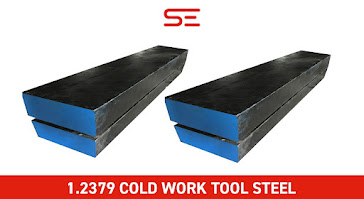How To Recognize The Tool Steel That Is Right For You
Recognizing the right Tool Steel involves understanding your specific needs and properties offered by different steels:
1. Application
Requirements: Assess the demands of your task—consider cutting, forming,
impact, or wear requirements. Identify temperature, pressure, and environmental
conditions the tool will encounter.
2. Tool Steel Types: Familiarize yourself with categories like High-Speed Steel, Cold Work Steel, Hot Work Steel, and Plastic Mould Steel. Each type has distinct properties catering to specific applications.
3. Properties Needed: Determine critical attributes like hardness, toughness, wear resistance, machinability, and corrosion resistance. Match these requirements with the properties of available tool steels.
4. Material Standards: Understand steel designations (e.g., AISI, DIN, or JIS) and their properties to compare different grades within the same category.
5. Consult Experts: Seek advice from metallurgists or engineers familiar with tool steel properties. Their expertise can guide you to the most suitable steel for your application.
6. Test and Experiment: Conduct trials with different steels in simulated conditions when feasible. This hands-on approach can reveal the steel that best meets your requirements.
7. Consider Cost: Balance performance requirements with budget constraints. Sometimes, a slightly less performing steel might be more cost-effective without compromising functionality.
8. Environmental Factors: Factor in working conditions like temperature, exposure to chemicals, or abrasive materials. Some steels might excel in specific environments.
By aligning your application needs with the properties offered by various tool steels and seeking guidance when needed, you can select the steel that optimally meets your requirements.
Reliability forms the backbone of the steel processing sector. Companies like Sandeep Enterprises, through their commitment to maintaining consistent quality standards, on-time deliveries, and dependable services, contribute significantly to the industry's progress.



Comments
Post a Comment